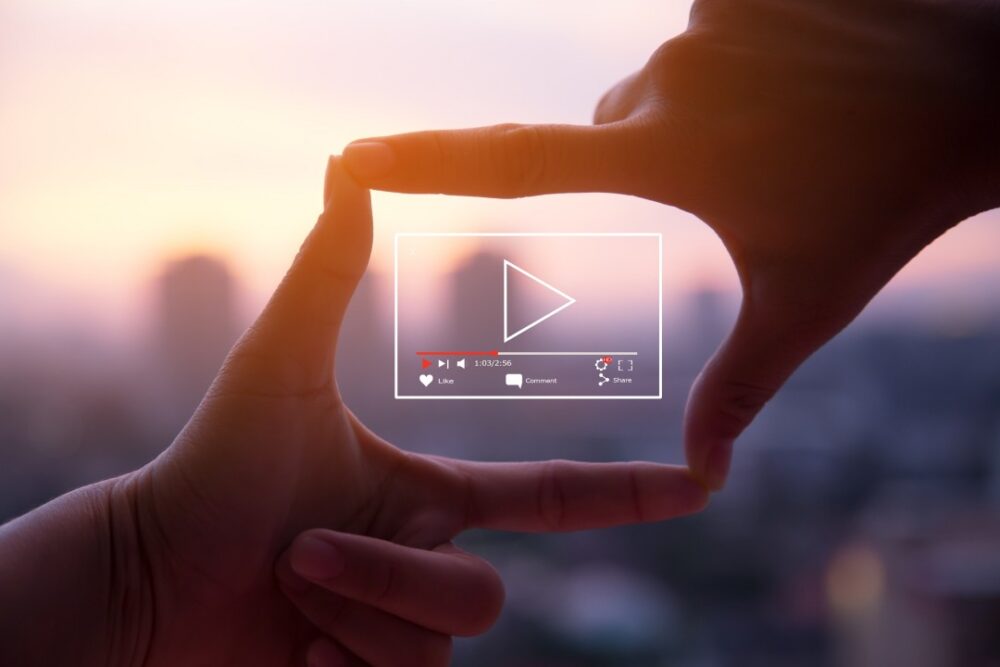Video captures attention like no other medium. When used strategically, it doesn’t just promote your business—it builds trust, inspires loyalty, and transforms your reputation. Let’s break down how to make it work for you.
Key Points
- Use video to build credibility and trust.
- Plan your content with a clear purpose.
- Tailor formats to fit your audience.
- Optimize for platforms and engagement.
- Measure results and refine your approach.
Why Video Outshines Static Content

Video offers a unique way to connect with people. It engages sight and sound, making your message hard to ignore. Unlike text or images, it evokes emotions quickly, creating a sense of familiarity with your audience.
Polished visuals and thoughtful storytelling ensure your company and brand stands out. When combined with professional help, such as corporate video production, your efforts leave a lasting impact. Check out FastCut for expert guidance that aligns with your goals.
Building Trust Through Video
Trust isn’t handed out freely—it’s earned. Video gives you a chance to show your human side and share what makes you trustworthy.
Transparency builds credibility. Show viewers what happens behind the curtain. Introduce your team, display how your products are made, or showcase company culture. People are drawn to businesses they can relate to on a personal level.
Customer testimonials amplify this effect. They’re proof that others value what you offer. Seeing a satisfied client can reassure potential customers and strengthen your reputation.
Steps to Create an Effective Video Plan
Planning makes or breaks your strategy. Without clear direction, even the best content may fail to connect. Use these steps to ensure success:
- Set your objective: Is your goal awareness, engagement, or conversions? Be specific.
- Know your audience: What are their needs? Where do they spend time online?
- Select the right format: Tutorials, testimonials, or live videos? Match the style to the message.
Don’t Forget to Define Metrics
Track engagement rates, watch time, and click-through actions to know what works and what needs tweaking.
Start small if resources are tight, but aim for quality. A single impactful video often outweighs multiple mediocre ones.
Which Video Formats Work Best?

Not all videos serve the same purpose. Diversifying formats ensures you reach a wider audience while keeping your content fresh.
- Explainer Videos: Perfect for simplifying complex concepts.
- Behind-the-Scenes Clips: Humanize your business and make it relatable.
- Live Sessions: Answer questions and interact with your audience in real time.
Short-form content thrives on platforms like TikTok and Instagram. Longer formats do better on YouTube, where viewers expect more detailed storytelling.
How to Optimize for Maximum Reach
Posting a video isn’t enough. Optimization ensures your content gets noticed and engages the right audience.
Keep visuals short and to the point. A compelling 30-second video often works better than an extended explanation. Include subtitles for accessibility and to grab viewers scrolling without sound.
Calls-to-action (CTAs) matter. Whether it’s subscribing to a channel or visiting your site, always guide viewers toward the next step. Platforms reward engagement, so the more people click, comment, and share, the better your content performs.
Pitfalls to Avoid When Creating Videos
Mistakes can hurt your efforts. Avoid the following:
- Skipping quality control: Poor visuals scream unprofessionalism.
- Ignoring platform preferences: Content that works on YouTube might fail on Instagram.
- Neglecting analytics: If you’re not tracking performance, you’re missing opportunities to improve.
- Consistency also matters. Uploading one great video, then vanishing for months, won’t build a loyal following.
How Video Strengthens Reputation

Videos don’t just promote—they tell stories that inspire trust. Use them to highlight milestones, share achievements, or showcase your contributions to the community.
Employee features are another effective strategy. Introducing your team adds a human element that audiences appreciate. Similarly, sharing corporate social responsibility (CSR) efforts demonstrates that you care about more than just profit.
These small actions combine to create a reputation that people respect and admire.
FAQ
- How can I start creating videos on a tight budget?
Use your smartphone and free editing tools for simple projects. For better results, collaborate with freelancers or small agencies.
- How do I decide which platform to prioritize?
Choose platforms where your target audience is most active. Instagram for younger users, LinkedIn for professionals, and YouTube for long-form content.
- Is professional production necessary for all videos?
Not always. Professional help is best for high-stakes campaigns, but casual content can feel more relatable.
- What length works best for videos?
Shorter is often better—aim for under two minutes unless your audience expects more in-depth content.
- Can videos improve customer relationships?
Yes, videos create a personal connection and keep your audience engaged with your business.
Final Thoughts
Video marketing isn’t just a trend; it’s a powerful tool for building trust, showcasing values, and elevating your reputation. Experiment with formats, focus on quality, and let each upload strengthen your connection with your audience.





